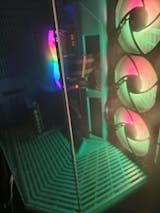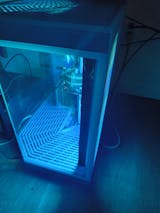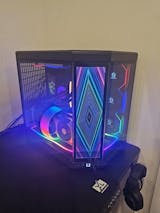Understanding Refresh Rate
The frequency, in hertz (Hz), at which a display updates its picture is known as its refresh rate. More frequent screen updates, or a faster refresh rate, make for more fluid and responsive graphics. Refresh rates of 60Hz, 120Hz, 144Hz, 240Hz, and even higher are common in the gaming industry.
What Role Does Refresh Rate Play in Gaming?
- Smoother Playing: A faster refresh rate allows for less motion blur and tearing during games. This becomes glaring in high-tempo sports where rapid thinking and action are paramount.
- Less Input Lag: Increased refresh rates help lessen the time between when you make a selection and when it appears on screen. The implications for competitive gaming might be enormous.
- A better immersion and sense of connection to the game environment is achieved with a greater refresh rate. In virtual reality games, this is crucial.
Selecting the Right Refresh Rate
Your preferred gaming style, available resources, and available funds all play a role in determining the optimal refresh rate for gaming. You may make a well-informed choice with the aid of the following factors:
- Your graphics card must be able to provide the frame rates required by your selected refresh rate. For a 144Hz panel, for instance, your GPU has to be able to produce at least 144 frames per second (FPS) reliably.
- Game Genre: Various game types gain from varying refresh rates. While 144Hz or greater is preferred by many competitive gamers, casual players may be satisfied with 60Hz.
- Cost: Monitors with a high refresh rate are typically more expensive. Think about how much money you have and if the enhanced gaming experience is worth it.
- Display Size and Resolution: Playing at a larger display or greater resolution may necessitate a more powerful GPU. Verify that your graphics card is capable of supporting the desired refresh rate, screen size, and resolution.
- Adaptive Sync Technology: Monitors featuring technologies such as G-Sync (NVIDIA) or FreeSync (AMD) may match the refresh rate of the monitor with the GPU's output, decreasing screen tearing and improving the gaming experience.
- To avoid ghosting and blurriness in fast-paced games, look for displays with short reaction times (measured in milliseconds).
Popular Refresh Rate Options
- Most TVs and game consoles operate at a refresh rate of 60 hertz (Hz). The level of smoothness and responsiveness required by competitive players may not be met.
- Many gamers find that a refresh rate of 120 or 144 hertz is optimal. Increased smoothness and responsiveness may be experienced with these refresh rates without resorting to excessively powerful GPUs.
- 240Hz is the frequency of choice for serious and competitive players who need the best possible performance. Requires a robust graphics processing unit and could not be used by all players.
- For individuals who want the fastest response times possible, monitors with refresh rates of 360 hertz and higher are already on the market. Esports and other forms of competitive gaming make extensive use of this.
The optimal refresh rate for gaming relies on the player's setup and preferences. While in most cases a higher refresh rate will result in a more fluid and responsive gaming experience, this may not be the case for every player. When deciding on a suitable refresh rate for your gaming setup, you need think about your graphics card, game genre, and budget. You'll get the most out of your gaming sessions if you can strike a good balance between performance and price.















